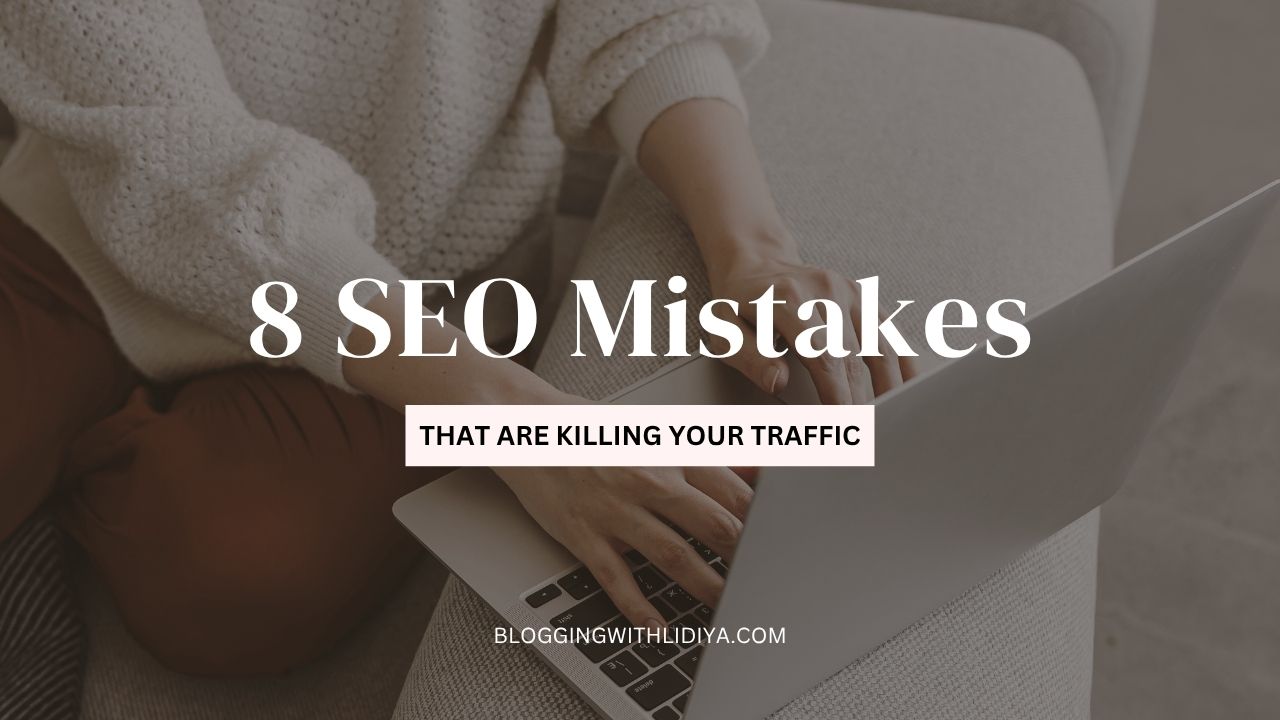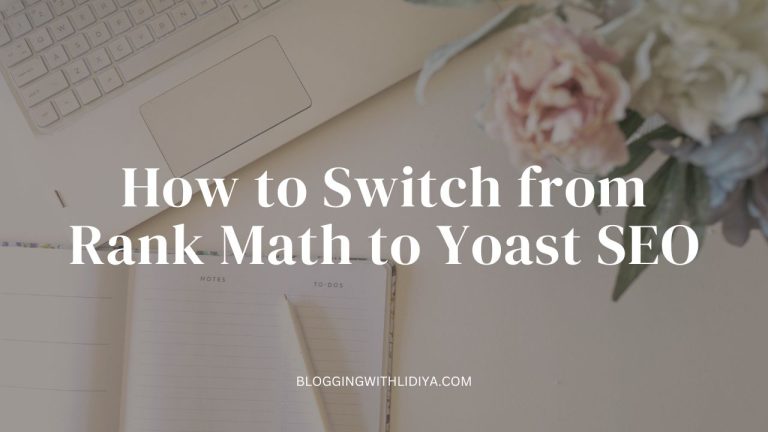8 SEO Mistakes That Are Killing Your Traffic
A big part of having a well-optimized blog is avoiding the common SEO mistakes and bad practices.
You might think you’d never do something risky that can make Google penalize you, but some of the things I’ll share in this post might happen even when you don’t mean it. It’s important to be aware of what you could potentially do wrong before your site grows, so you won’t need to go back to old pages or links and update them or spend hours trying to find errors.
There’s a special term online for marketers and website owners deliberately manipulating search engines to rank their site higher.
It’s called black hat SEO and it includes things like:
- Paying for links;
- Keyword stuffing (including your keyword in the text of a page as many times as possible even though it makes it sound unnatural and will look spammy to the reader);
- Content spinning (which is using other people’s content and publishing it on your site with small changes trying to make search engines think it’s original text);
- Having hidden text or links on your site (that requires tech knowledge beyond the basic blogger’s skills);
- Using software to generate content;
- Excessive link exchange – exchanging links with other bloggers or clients with the hope to boost both of your sites’ rankings faster.
All this is risky behavior and sites like that don’t survive long online. Of course, you shouldn’t even think of any of these as you’re trying to build a blog with original content that will be the foundation of your brand, which you can monetize and use as a way to achieve financial freedom. It’s good to know what black hat SEO looks like, though.
Now, let’s see some not so scary practices but which can also affect your SEO negatively and will prevent you from having success with your blog.

SEO Mistakes to Avoid
1. Over-optimization.
Be careful not to get obsessed with optimizing your site because you’ll get to a point where it will just be too much and Google doesn’t like to see that.
If you do that (through things like installing many plugins to optimize different aspects of your site, writing for search engines, optimizing every single page on your site, creating pages solely for the purpose of ranking them, etc.), your site will be seen as spammy rather than an authoritative resource in your niche.
You need to do things for the visitor first, to write natural content, to put user experience before SEO optimization, and to stick to trusted WP plugins instead of testing new ones you aren’t familiar with.
2. Linking to suspicious sites.
This SEO mistake is obvious but it’s worth adding it to the list. You take responsibility for your site’s authority with everything you publish on your blog, including the sites you link to.
External links (links to any other site than yours) should exist in every blog post. Adding 1-4 is okay depending on the length of the article.
You should add one where relevant and including pieces of research, studies and stats is a good idea. In addition, you can link to big platforms like Forbes, Entrepreneur, TIME magazine, The Huff Post, Wikipedia, and government and educational sites.
But be careful when linking to a site you don’t know. It should be a trusted one, with good domain authority, which has a lot of content and is designed professionally.
3. Loading your footer with links.
Back in the days when SEO was simpler because search engines weren’t that smart, website owners used to include many links in their footer because these were given a lot of power (together with those in the navigation bar). But things are different now.
When you go to one of the pages on your blog, you should know that the most important links for Google are those in the content. They are natural and relevant.
What you add in the Menu and footer should be to help direct visitors to the right pages of the site. They also tell search engines which pages on your site are the most important ones.
So, what to include in the footer? Do what feels right just don’t go overboard (some sites desperately trying to rank high for keywords include long lists of articles or keyword phrases linking to their pages and posts).
4. Not removing spam comments.
You will get spam comments so don’t forget to put them in the trash. Even if you’re using the plugin Akismet for spam protection and have to first manually approve a comment before it appears on your site, some spam comments might still be there.
Usually, they have many links in the text, don’t make sense and are by a suspicious user.
Don’t publish these on your site. Even though not much weight is given to them, many of these aren’t a trust signal to visitors and search engines.
5. Forgetting to optimize images.
You can use plugins like EWWW Image Optimizer or Shortpixel to automatically optimize every single image on your blog.
You can also do it manually every time you add a new visual. That simply means renaming your image (usually adding a few words to describe what it’s about) and filling the Alt text field (here’s where you can add your keywords).
But not doing any of that and having images on your site that aren’t resized, have no Alt text and whose names are random numbers and letters, means your site isn’t fully optimized.
6. Including too many links on a page.
Be careful not to overdo this. If you don’t do it consciously, you will end up adding internal and external links on every next paragraph, and that’s simply unnecessary.
What’s more, each link to another page gives it an SEO boost which means your current page is losing some weight when giving link juice to too many other pages. And that’s not useful to the reader as he might end up opening many new tabs on their browser and that leads to information overload.
Instead, include links when necessary and always have 2-3 internal and 2-3 external ones in a blog post (assuming the article is at least around 800 words).
7. Writing only for search engines.
It’s a good idea to do keyword research, pick a good topic that’s in demand and create a great article based on keywords related to it. But that can go in the wrong direction too if you stop caring about helpful and long-form content and covering different aspects of your niche and only begin creating content for search engines.
That’s not natural and visitors won’t stay on your pages long. So keep in mind you should publish articles that aren’t optimized for a keyword every now and then and interlink them with others on the topic. These too can start ranking for keywords or synonyms that you’ve naturally included inside.
8. Using too many affiliate links.
One of the most common blog monetization methods is affiliate marketing. Once you learn the basics, you’ll start adding affiliate links to your posts.
These are links pointing to a product/service that someone else is offering but which you get a commission for every time you refer a buyer. That means they are promotional links and too many of them will turn the reader off.
Even though these links will be nofollow, too many of them will also tell Google you’re doing something unnatural (most often, promoting things too much on your pages instead of adding value with each link).
So, these are the SEO mistakes and bad optimization habits you should stay away from. Now that you learned about them, I believe you won’t make any errors like that.







